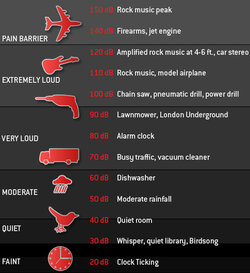diaz, would you care to go into more detail about SPL coupling? I'm comfortable enough working with decibels, though not in the context of SPL (I'm usually messing around with dBm in RF, or dBFS in digital audio). I understand that doubling the power results in a 3 dB gain (since log(2) = 0.3). The only thing I can think of that would come close to providing (or possibly exceeding) an additional 3 dB gain would be resonance, but wouldn't that only come into effect for specific frequencies?
JigPu
SPL coupling happens depending on the distance between to sources with the same sound. They must be aligned towards the same direction and the effect is most intense when they are directly parallel to each other, wheter side by side or stacked in series. The important measure is the lenght of distance between the physical centers of the sources, since this will determine the frequency range that will be affected.
For example, lets say you have two 25mm fans. If you stack them directly together, then you will have a distance of 25mm between the centers. A full wavelength of 25mm is about 13.5kHz. The coupling effect begins at quarter wavelength, so 1/4 of 25mm is 6.25mm.. The effect would begin at about 55kHz.. Which means it will be heard at any frequency under that. Basically, its a bad idea to couple two fans directly to each other with the same frequency output, so as long as both fans have different frequencies (at least RPM), that coupling should not happen. But anything from the range of 1hz to 20kHz of audible range, fans with matching RPM's will gain that 3dB coupling.
Second example, would be two fans directly side by side. If both fans are rotating at the same RPM (or within a certain range), now the separation between the centers is 120mm. The quarter wave becomes 11500Hz, still in the audible range, but it doesn't fully come in effect until 2850Hz and lower. Adding any amount of distance to both fans would exponentially lower the frequency range affected to under 1kHz (1000RPM).
Remedy to that would be to place two (identical) fans at different RPMs, which I would separate until you hear a large drop in sound. Or, if you have two different fans, the RPM separation should be slightly easier to manage since the sound produced by both at the same RPM might be very different, so the coupling might not apply. Lastly, you can angle them away from each other, since the coupling effect dissapears as you angle one away from the other.
3dB = twice the power needed to produce this increase, is basically a noticed increase in volume
6dB = 4 times the power needed to produce the increase, almost perceived as twice as loud.
10dB = perceived twice the volume, or twice as loud.

